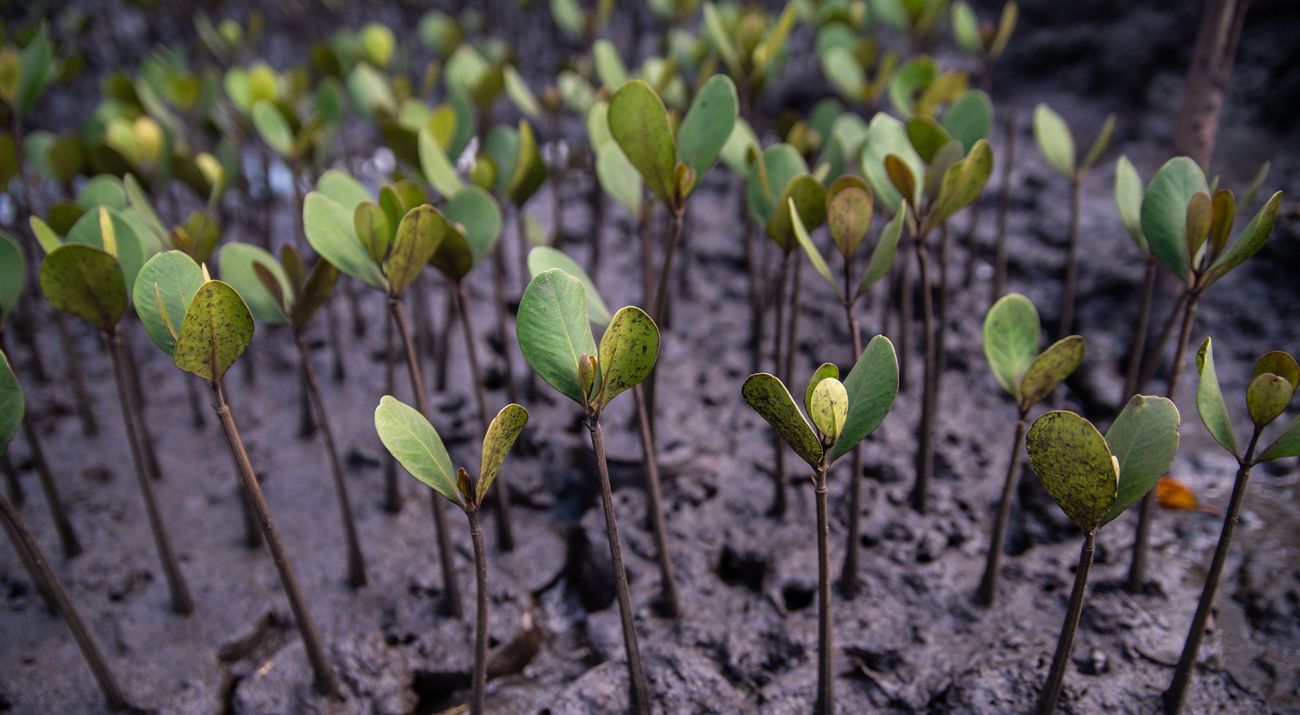
Help Protect Mangroves
Donate NowYou might have to look closely at the mud to see the thin, green propagules sticking through the ground. Women in multicolored hijabs and kangas are leaning over, tending to these precious seeds and saplings. After a couple of years, they will grow to become full-sized mangrove trees, with root structures visible both above and below the water's surface.
This wasn’t always a typical scene in this coastal village on Kenya’s northern coast. In fact, just a few years ago, most community members knew very little about how to protect the mangroves they depended on for a variety of resources like construction material, livestock fodder, medicine, honey, and even mosquito repellent.
That all changed in 2018, when The Nature Conservancy and numerous other partners began a project to secure, restore, and improve the management of mangrove ecosystems in Lamu County.
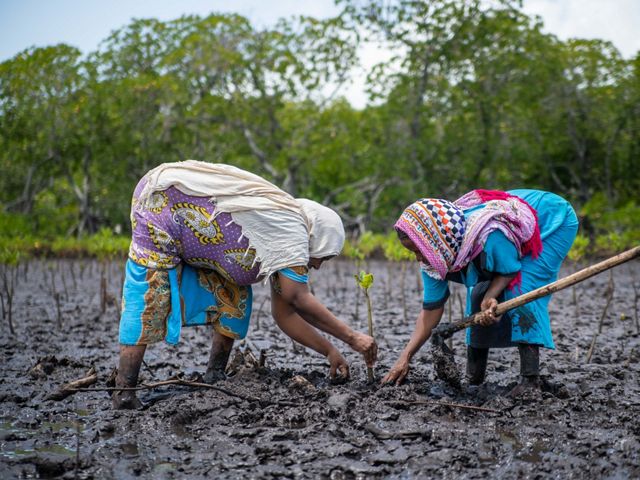
Mangroves Are Super Trees
While all trees have important roles to play in the ecosystem, mangroves are extra special. Not only do they prevent coastal erosion and provide a buffer against storm surge, they also absorb about four times more carbon than their terrestrial counterparts, making them especially important in tackling climate change.
Mangroves also provide important habitat for a variety of animals on land and under the water. In fact, most reef fishes and sharks begin their early life in mangrove ecosystems, which serve as a feeding ground as well as protection from predators. Female lemon sharks will even return to the same mangrove forests that they were born in to give birth to their own litter of pups.
The mangroves in Kenya are threatened by overexploitation for wood products, land conversion, and pollution, and more than 40 percent of total mangrove area is now degraded. Lamu County, home to over 60% of Kenya’s mangroves and where TNC has already been engaged in community-based conservation, was the ideal place to focus mangrove conservation efforts.
In this landscape we are partnering with Northern Rangelands Trust (NRT), Kenya Forest Service (KFS), Kenya Marine and Fisheries Research Institute (KMFRI), and many others. We support and strengthen the capacity of Lamu communities to protect, manage, and restore priority mangrove habitat and deepen connections with Community Forest Associations. These actions help reduce threats to mangrove habitats for biodiversity conservation, community livelihood, and climate benefits.
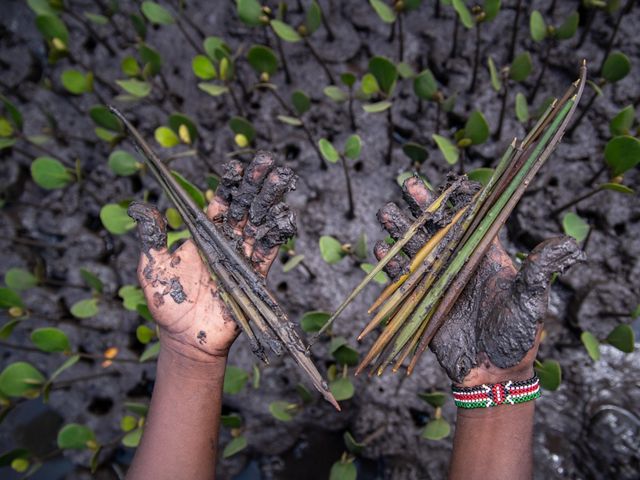
The Mangrove Guardians
Zulfa Hassan is known locally in her community as “Mama Mikoko” (or “Mother Mangrove”) for her role in mangrove restoration efforts. The 35-year-old mother of four was intrigued when TNC, NRT, KMFRI, and the Pate Marine Community Conservancy (PMCC) visited Mtangawanda Village and asked women to join them in mangrove restoration.
Zulfa began learning about how extractive practices, such producing limestone chalk for building materials, were harming the mangroves.
“We knew loggers cut mangroves to get money, but didn’t realize they are destroying mangroves in the process,” Zulfa said. “Before, our perceptions were that mangroves are self-generating. We didn’t have that knowledge then. These organizations helped us to understand a lot about mangroves — we previously didn’t know how to plant them or how to collect propagules.”
That’s when Zulfa decided to form the Mtangawanda Women’s Association, which has grown from 15 to 30 members in the last three years. The association is now involved in mangrove restoration activities, including directly planting propagules and transplanting mangrove saplings and nursery-raised seedlings to areas that have been identified as degraded by TNC and research partners.

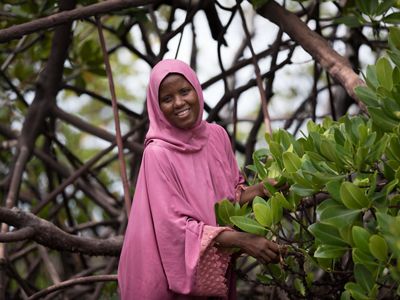
Reaping the Rewards of Restoration
TNC and other partners provided a lot of training and support. One addition was a mangrove restoration calendar that has helped Zulfa and fellow community members better understand concepts such as seed maturity and timing for collection and pre-treatment of mangrove propagules.
Since 2018, together with other women’s groups in nearby Pate Island and Kiunga Village, they have directly planted over 61,000 mangroves in approximately 12.5 hectares (30 acres) of degraded mangrove area. An additional 100 hectares (247 acres) are being restored by enhancing community policing of unregulated exploitation and removing other hindrances to natural regeneration.
One improvement the women have already seen is in numbers of aquatic invertebrates. The mangroves provide important habitat for crabs, which is the dominant target species for fisher folks in Mtangawanda.
“Crab numbers were affected due to the degradation,” Zulfa said. “Nowadays, fishers tell us that they pass by our plantations and see crabs sleeping.”
And the women are experiencing their own direct benefits, too. Women who remain active in the association are invited to join NRT’s microfinance group, through which they can apply for loans to start sustainable businesses.
Quote: Soso Barofa
When I was younger it was much easier to find large crabs because there was more mangroves. When people are logging mangroves, there are fewer crabs. Crabs thrive in mangroves.
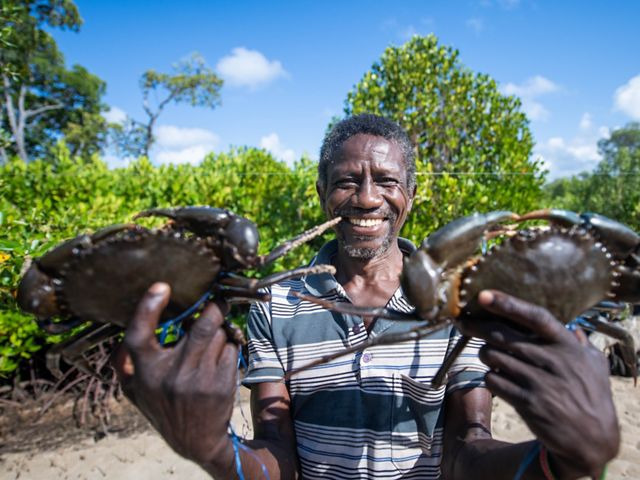
A Spark of Hope for a Brighter Future
This project, through science and participatory approaches, has established two Community Forest Associations (CFAs) in Lamu County and helped improve connections with other community-led conservation initiatives.
The CFAs have drafted Participatory Forest Management Plans and are looking forward to signing a Forest Management Agreement with Kenya Forest Service to secure tenure rights for co-management of the mangrove forest. With technical support from KMFRI and KFS, the project is bringing together local communities, government agencies, NGOs, the private sector, and other actors to guide sustainable harvesting of the County’s mangroves and enhance community benefits.
For the members of the Mtangawanda Women’s Association, these mangroves are a green spark of hope for an even brighter future. Their good work is getting noticed, too: Visitors coming to learn about the mangrove project—including researchers, students, and community groups from outside Lamu—are charged a fee that the Association is putting toward community development projects agreed upon during annual meetings.
“I don’t want my children to face the same challenges I had growing up with regards to education as result of poverty,” Zulfa said. “The project has brought us women together, and my hope is that it will hugely impact us positively.”
Special thanks to our partners and funders: County Government of Lamu, Kenya Forest Services, Kenya Forestry Research Institute, Kenya Marine and Fisheries Research Institute, Northern Rangelands Trust, Pate Marine Community Conservancy, and the United States Agency for International Development (USAID).
A Closer Look at the Project
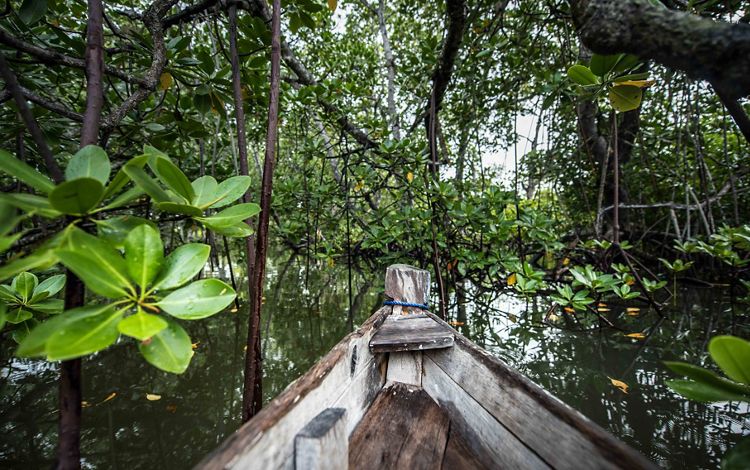
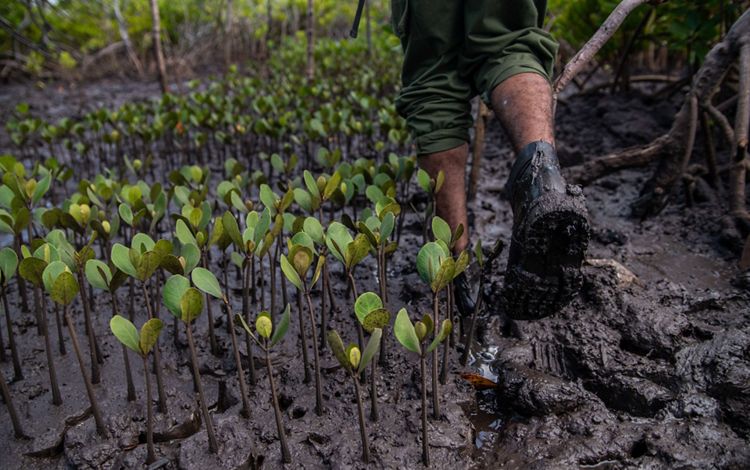

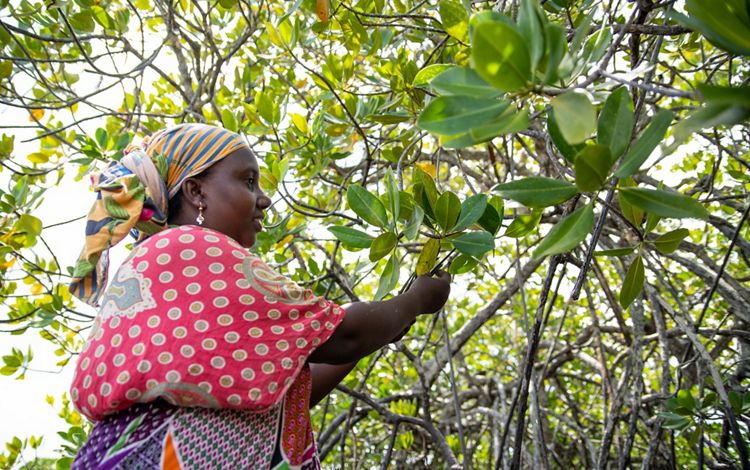
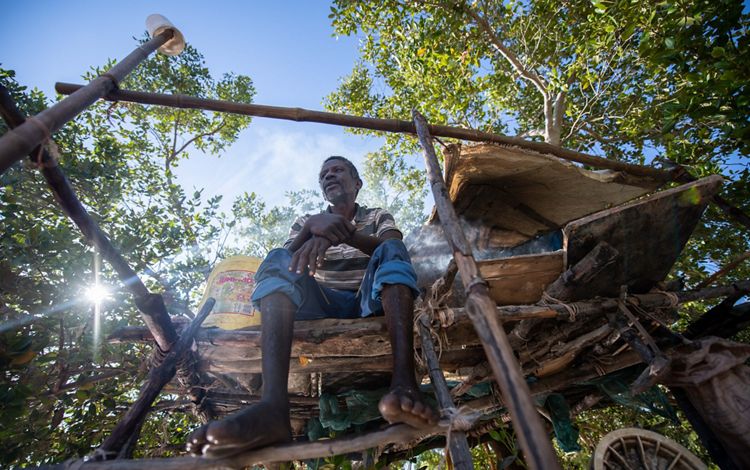
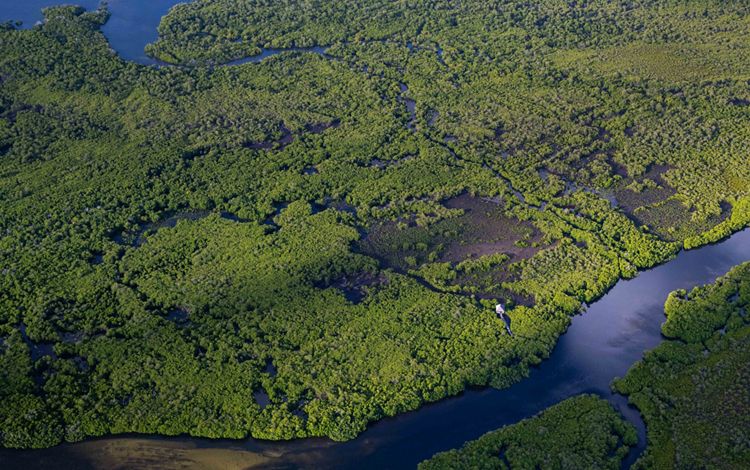
The Global Insights Newsletter
Get our timely takes on some of the biggest challenges facing people and the planet.
